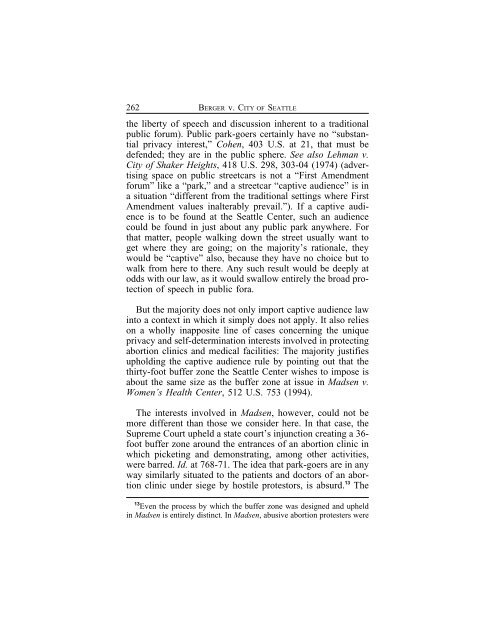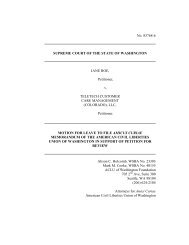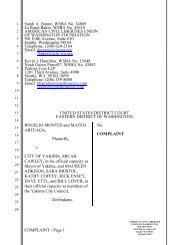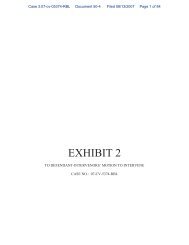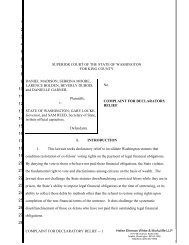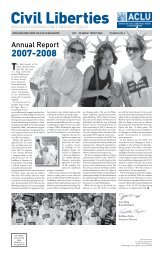BERGER v. CITY OF SEATTLE - ACLU of Washington
BERGER v. CITY OF SEATTLE - ACLU of Washington
BERGER v. CITY OF SEATTLE - ACLU of Washington
Create successful ePaper yourself
Turn your PDF publications into a flip-book with our unique Google optimized e-Paper software.
262 <strong>BERGER</strong> v. <strong>CITY</strong> <strong>OF</strong> <strong>SEATTLE</strong><br />
the liberty <strong>of</strong> speech and discussion inherent to a traditional<br />
public forum). Public park-goers certainly have no “substantial<br />
privacy interest,” Cohen, 403 U.S. at 21, that must be<br />
defended; they are in the public sphere. See also Lehman v.<br />
City <strong>of</strong> Shaker Heights, 418 U.S. 298, 303-04 (1974) (advertising<br />
space on public streetcars is not a “First Amendment<br />
forum” like a “park,” and a streetcar “captive audience” is in<br />
a situation “different from the traditional settings where First<br />
Amendment values inalterably prevail.”). If a captive audience<br />
is to be found at the Seattle Center, such an audience<br />
could be found in just about any public park anywhere. For<br />
that matter, people walking down the street usually want to<br />
get where they are going; on the majority’s rationale, they<br />
would be “captive” also, because they have no choice but to<br />
walk from here to there. Any such result would be deeply at<br />
odds with our law, as it would swallow entirely the broad protection<br />
<strong>of</strong> speech in public fora.<br />
But the majority does not only import captive audience law<br />
into a context in which it simply does not apply. It also relies<br />
on a wholly inapposite line <strong>of</strong> cases concerning the unique<br />
privacy and self-determination interests involved in protecting<br />
abortion clinics and medical facilities: The majority justifies<br />
upholding the captive audience rule by pointing out that the<br />
thirty-foot buffer zone the Seattle Center wishes to impose is<br />
about the same size as the buffer zone at issue in Madsen v.<br />
Women’s Health Center, 512 U.S. 753 (1994).<br />
The interests involved in Madsen, however, could not be<br />
more different than those we consider here. In that case, the<br />
Supreme Court upheld a state court’s injunction creating a 36-<br />
foot buffer zone around the entrances <strong>of</strong> an abortion clinic in<br />
which picketing and demonstrating, among other activities,<br />
were barred. Id. at 768-71. The idea that park-goers are in any<br />
way similarly situated to the patients and doctors <strong>of</strong> an abortion<br />
clinic under siege by hostile protestors, is absurd. 13 The<br />
13 Even the process by which the buffer zone was designed and upheld<br />
in Madsen is entirely distinct. In Madsen, abusive abortion protesters were


